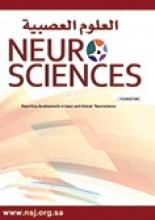Abstract
Defining intractable epilepsy is essential not only to identify up to 40% of patients refractory to pharmacological management, but also to facilitate selection and comparison of such patients for research purposes. The ideal definition still eludes us. Multiple factors including number of antiepileptic drug (AED) failures, seizure frequency and duration of unresponsiveness, etiology, and epilepsy syndromes are considered in formulating the definition of pharmaco-resistant epilepsy. Most definitions used in the literature agree on the number of AED failures, which seem to be 2 or 3, however, the seizure frequency and time factor are varied. The International League Against Epilepsy proposed a definition of drug-resistant epilepsy as a failure of adequate trials of 2 tolerated and appropriately chosen and used AED schedules. This for now, could provide an operational definition for clinical and research settings. However, with emergence of new data and novel treatments the criteria for intractability may change.
- Copyright: © Neurosciences
Neurosciences is an Open Access journal and articles published are distributed under the terms of the Creative Commons Attribution-NonCommercial License (CC BY-NC). Readers may copy, distribute, and display the work for non-commercial purposes with the proper citation of the original work.






